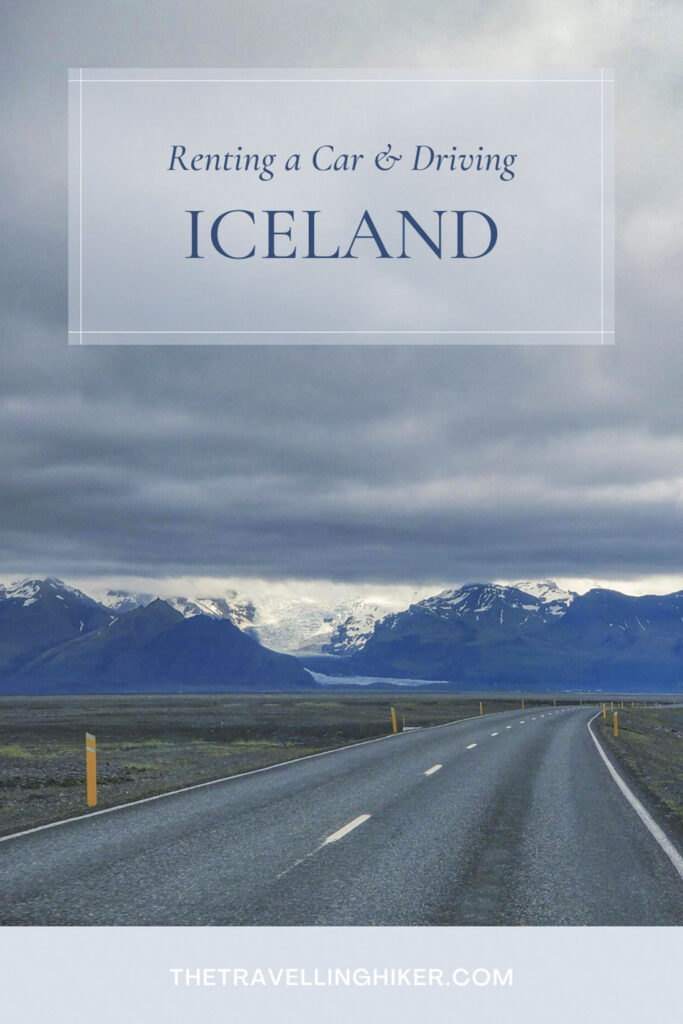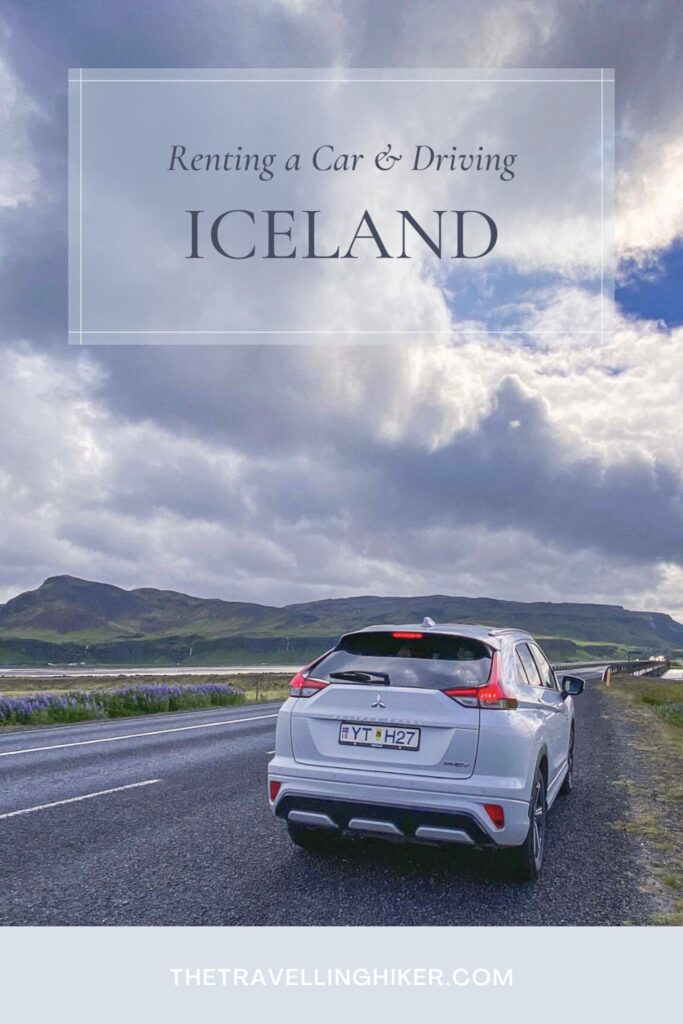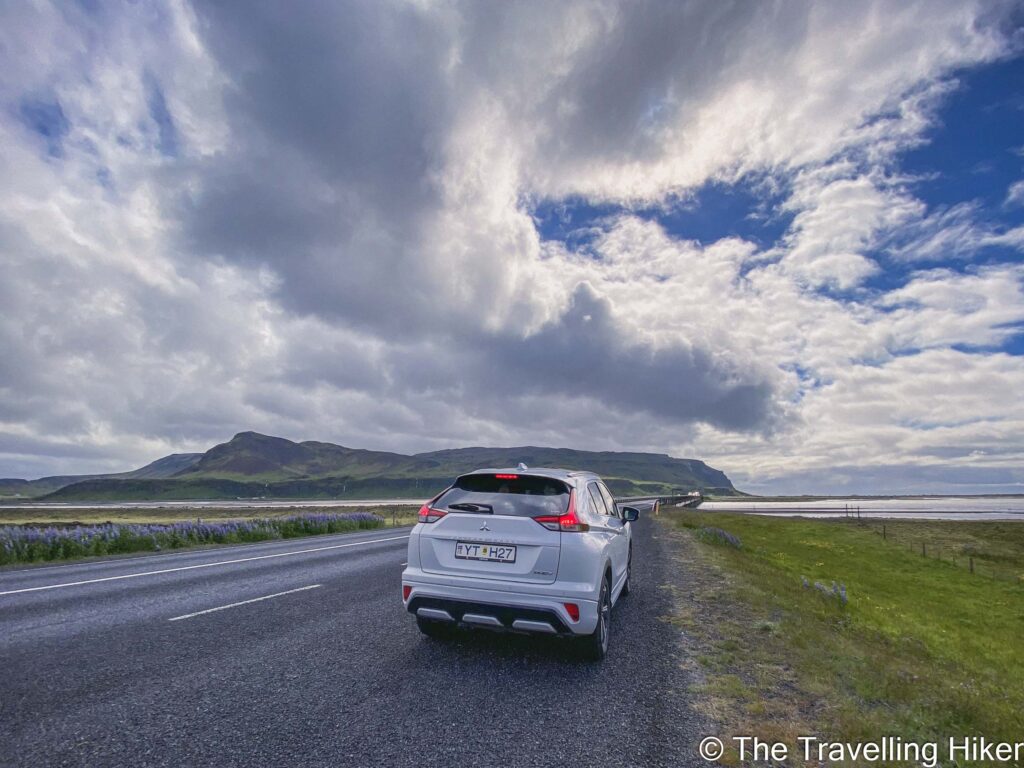Planning a road trip in Iceland? Great choice! This country is the perfect destination for your next road trip! Driving along the famous Ring Road (N1) in Iceland is an amazing experience. You will be driving by beautiful mountains with waterfalls, glaciers, lava fields, and much more. In this blog, I will share with you everything you need to know about renting a car & driving in Iceland.
Tips For Renting A Car In Iceland
1. What Type Of Car Should You Rent?
The first question that might come into your mind when looking for car rentals in Iceland is: what kind of car do I need? Do I need to rent a 4×4 car or is a 2WD enough? The answer to these questions will depend on the kind of road trip you have in mind.
- You plan to do the classic Ring Road around Iceland and just stop to visit the main tourist places.
In this case, a 2WD car is enough. You will only take alternative routes and gravel roads occasionally since most tourist places in Iceland have accessible roads.
- You plan to visit the Highlands and visit some less touristy places.
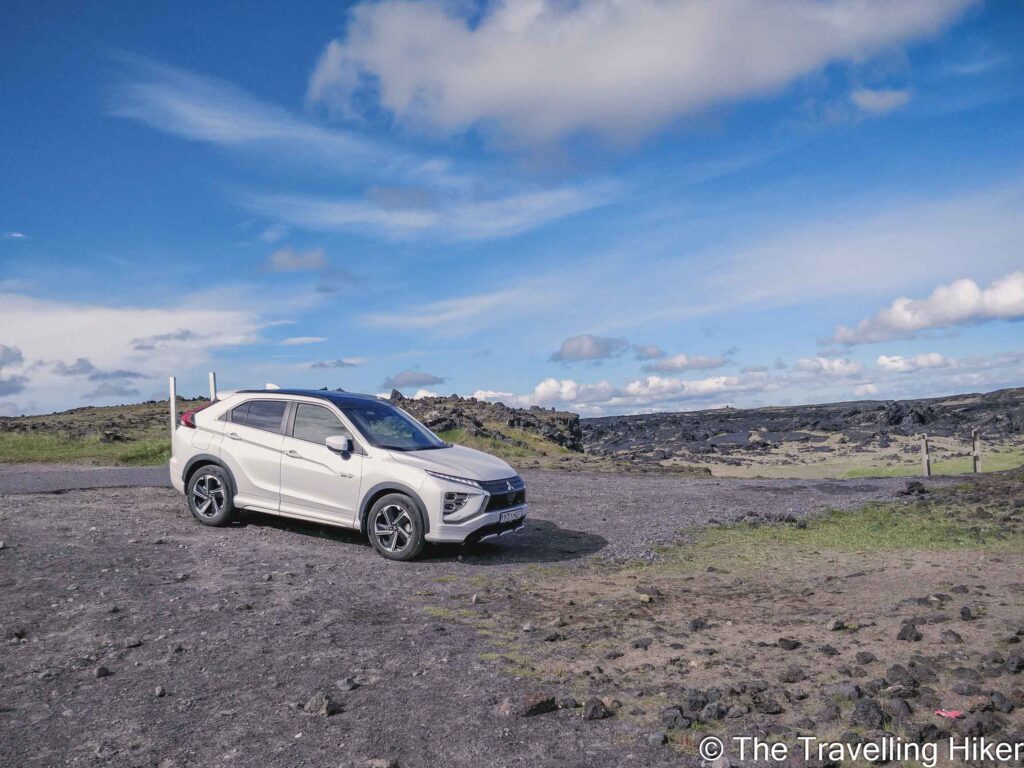
2. Book Your Car In Advance
Iceland is a very popular destination, particularly during the summer months. On top of that, public transport in Iceland is very limited. The combination of these two factors makes car rentals sell out very fast and prices of the remaining available cars escalate.
To avoid this, you will have to book your car rental well in advance. The sooner you book it, the better deal you will get. I always book my car with RentalCars, which allows you to compare prices and available cars from many different companies and you can cancel your reservation for free until 48h before your travel.
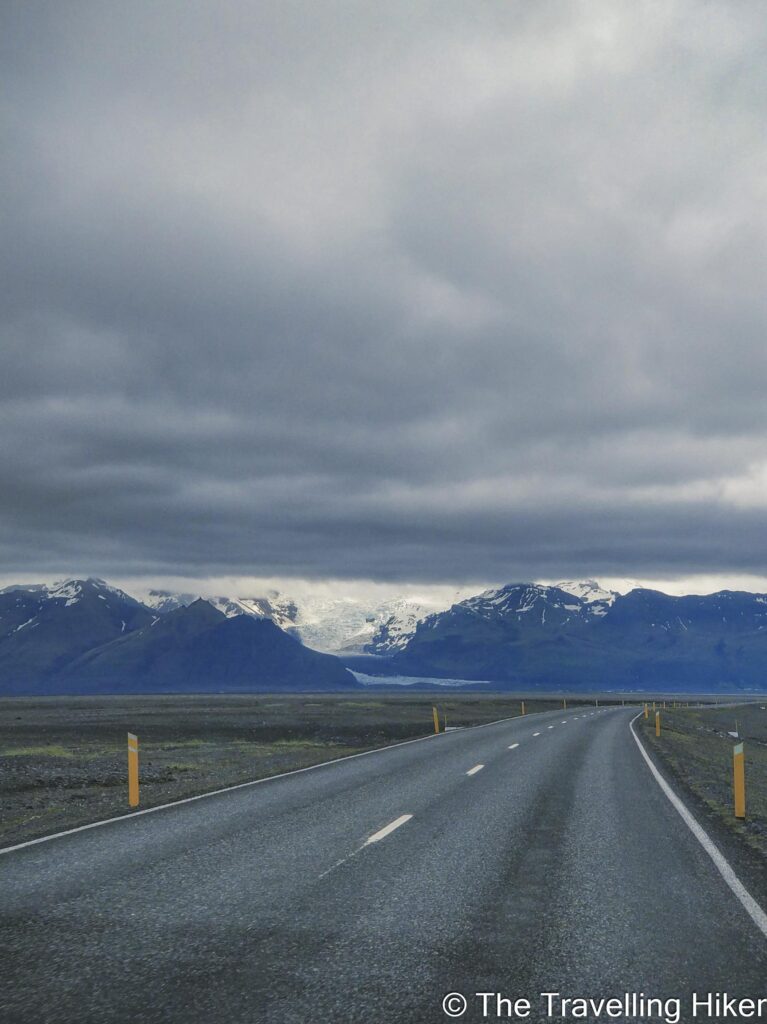
3. Get Extra Insurance!
If you are renting a car in Iceland, make sure to get all the extra insurance you get offered like SCDW (Super Collision Damage Waiver) and Gravel Insurance. Yes, this is not a joke! Many roads in Iceland are gravel roads that will make plenty of little rocks fly next to your car that can very easily create a small dent in your car or initiate a crack in your windshield. Do you really want your trip to get spoiled by having to pay extra charges at the end of your trip?
TIPS:
- Make sure to examine your car before leaving the car rental company. If you see any dent or crack already in your car, take plenty of pictures and notify them about it.
- When driving on a gravel road, moderate your speed (even if the speed limit on gravel roads is 80km/h).
- If you are driving behind a car on a gravel road, make sure you leave enough distance in between. This will prevent any flying rocks thrown by the car in front to hit you.
4. Minimum Age To Rent A Car & Driving License
You will have to be at least 20 years old to be able to rent a car in Iceland. In addition, some companies may impose additional limitations until the age of 25.
With regards to your driving license, if you are from Europe, your national driving license is enough and you don’t have to get an international driving license.
Tips For Driving In Iceland
1. Don't Drive Over The Speed Limit
The speed limit in Iceland for cars is as follows:
- Urban areas: 50 km/h
- Gravel roads: 80 km/h
- Paved roads: 90 km/h
2. Add Fuel To Your Car Regularly
Always try to keep your fuel tank almost full. There are some parts of Iceland where gas stations are not very common.
Once we were driving along the Ring Road and saw a sign that said the next gas station will be in 250 km. If you are driving a regular diesel or gasoline car, this isn’t usually an issue. However, our car (like many rental cars in Iceland now) was a hybrid, which meant that the autonomy was around 400km with a full tank.
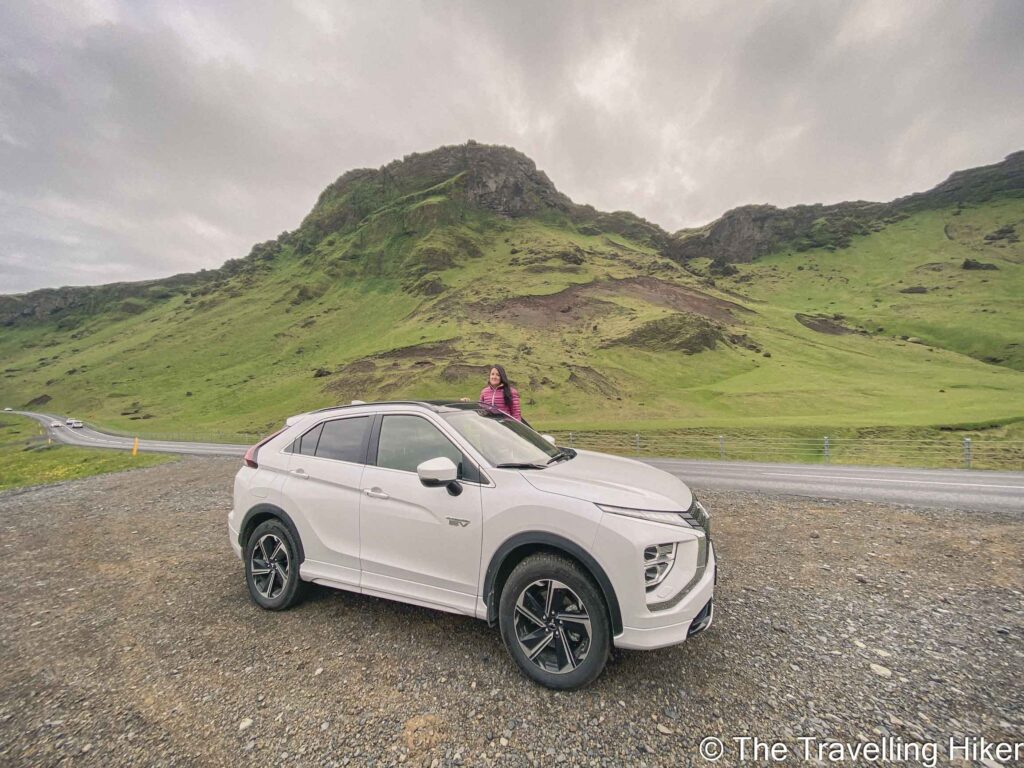
3. Always Drive With The Headlights On
In Iceland, it is mandatory to always drive with your headlights on! Make sure to always turn them on, before starting to drive.
4. Toll Roads
There is only one Toll Road (or Tunnel to be more specific) in Iceland. It is the Vaðlaheiði tunnel, close to the town of Akureyri. If you are planning on driving along the Ring Road, you will have to either drive through it or take a small detour.
If you are planning on driving through this tunnel, you will have to pay the toll via the tunnel website within the next 24h after taking the tunnel. You will find all information about payments and prices on this website.
5. Pay Attention to Animals On The Road
While driving around Iceland you will have to be extra careful to avoid animals on the road, particularly 2 kinds of animals.
- Sheep: During the summer months, sheep run freely in the whole country. They can go wherever they want and can cross the roads at any moment. If you are driving along the road and notice some sheep on the side of the road, make sure to slow down and pay extra attention.
- Birds: Birds in Iceland tend to fly quite low, so it is also important to watch out for them as well.
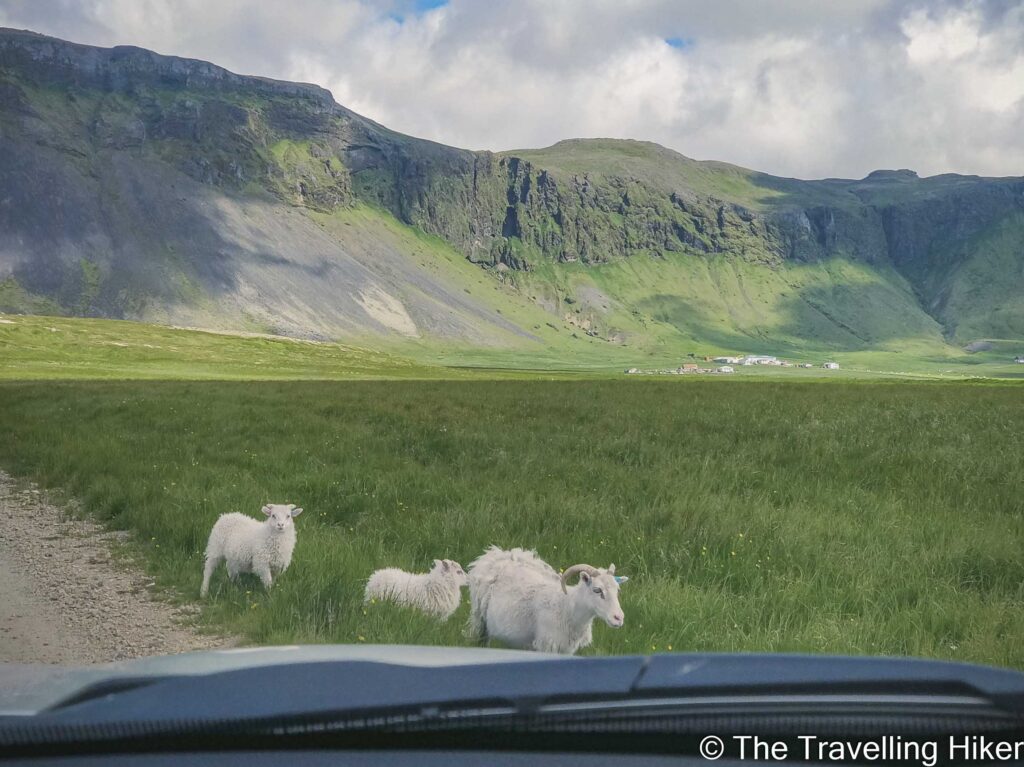
6. Extreme Weather Conditions
The weather in Iceland can change very quickly. You may be driving in clear sunny conditions and after a few kilometers, you find yourself in the middle of a foggy or rainy area. This is why it is very important to follow the speed limits in Iceland and always adapt your speed based on the weather conditions. You might even have to stop and wait for a while until the weather improves!
You should regularly check the weather and road conditions on the website road.is.
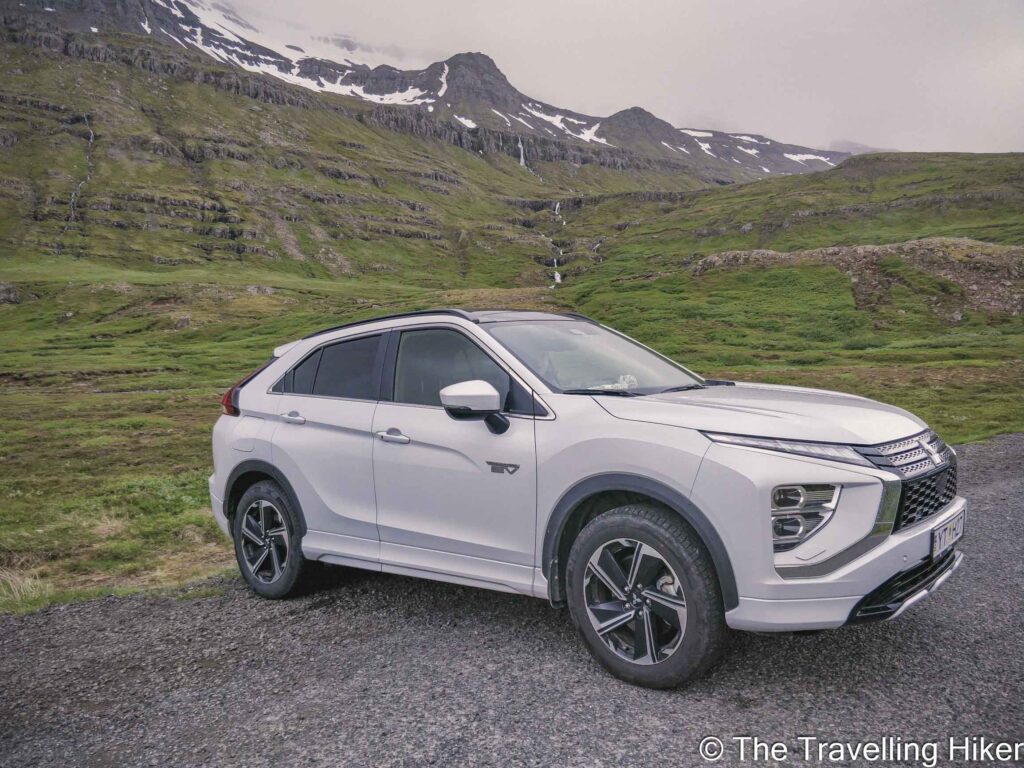
7. Don't Stop In The Middle Of The Road To Take Photos
During your road trip, you are going to see so many beautiful places that you will constantly want to stop for pictures. However, Icelandic roads are quite narrow and full of blind spots. Never stop in the middle of the road to take photos, it is not safe!
If you keep driving a bit further, you will soon enough find side parking on the road where you can safely stop!
8. Always Park Your Car Facing The Wind
Wind is part of the extreme weather conditions, I mentioned before. Never underestimate the power of wind in Iceland, it has on many occasions blown away car doors. To protect your car, always park it facing the wind.
9. Off-Road Driving Is Not Allowed
It is not allowed to drive off-road or on any path or road that does not have any numbering. If you are found doing this, not only will you get a fine but on top of that, the insurance will not cover any damage that may occur to the car.
10. Driving In Roundabouts
Driving in roundabouts is quite different in Iceland. The rules on who should give priority in a multilane roundabout are different in this country. Here, it is the inner lane that has priority over the outer lane.
Other articles about Iceland
- PLAN YOUR TRIP TO ICELAND ON YOUR OWN
- TWO WEEKS ICELAND ROAD TRIP ITINERARY
- 20 BEST THINGS TO DO AND SEE IN REYKJAVIK
- HIKING IN THINGVELLIR NATIONAL PARK
- RENTING A CAR & DRIVING IN ICELAND – EVERYTHING YOU NEED TO KNOW
- ONE DAY IN THE GOLDEN CIRCLE
- THE SKOGA TRAIL – THE HIKE BEHIND SKOGAFOSS
- KVERNUFOSS – THE LESS VISITED WATERFALL NEXT TO SKOGAFOSS
- HIKING IN SKAFTAFELL NATIONAL PARK
- 21 WATERFALLS THAT YOU CAN’T MISS IN ICELAND
- KAYAKING IN JOKULSARLON
- KRAFLA VITI CRATER AND LAVA FIELDS
- HIKING IN DIMMUBORGIR
- HVERFJALL CRATER HIKE
- GLACIER HIKING AT VATNAJOKULL
- HVERIR GEOTHERMAL AREA
Enjoyed this guide? Pin it for later!
